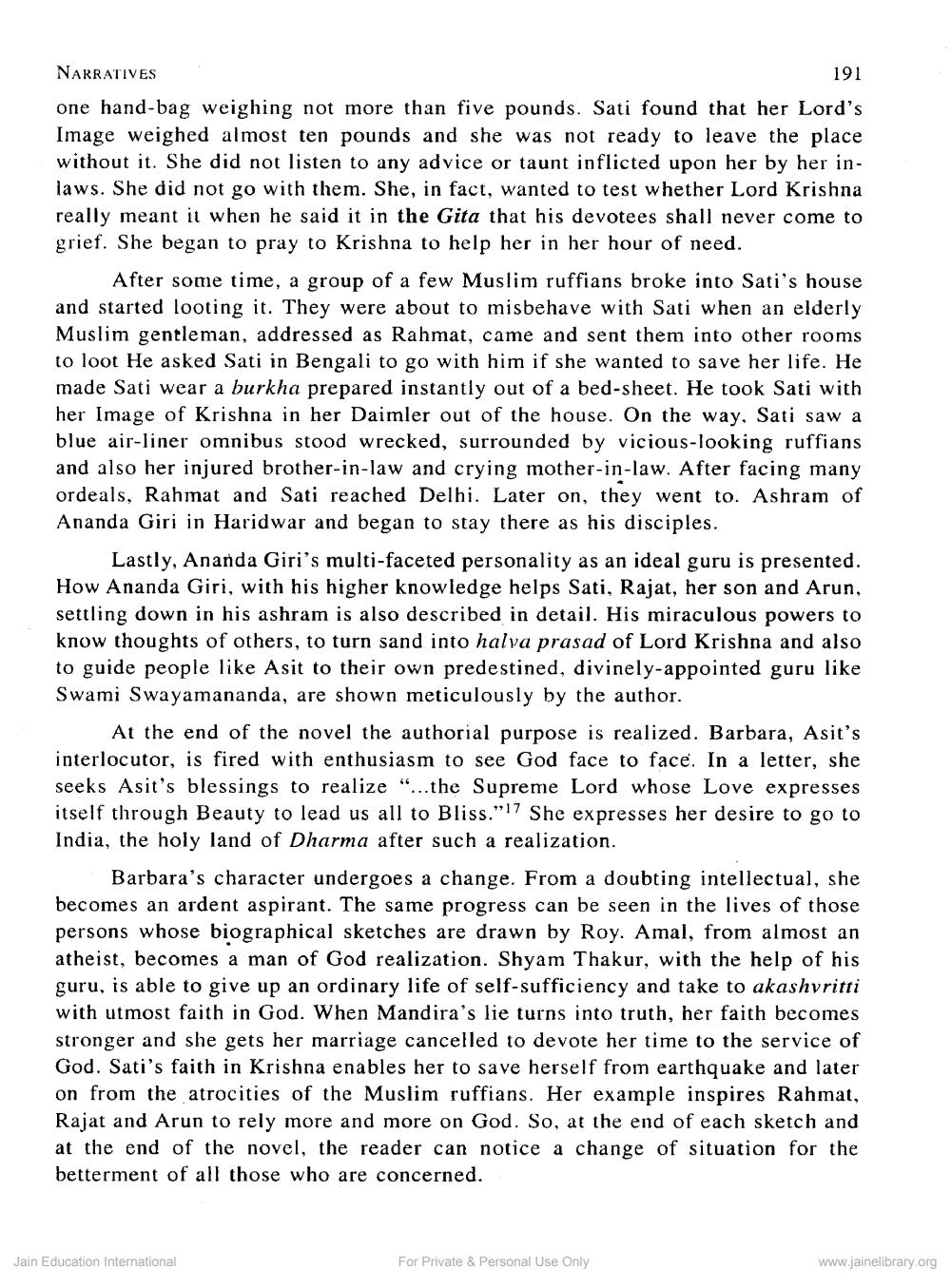________________
NARRATIVES
191 one hand-bag weighing not more than five pounds. Sati found that her Lord's Image weighed almost ten pounds and she was not ready to leave the place without it. She did not listen to any advice or taunt inflicted upon her by her inlaws. She did not go with them. She, in fact, wanted to test whether Lord Krishna really meant it when he said it in the Gita that his devotees shall never come to grief. She began to pray to Krishna to help her in her hour of need.
After some time, a group of a few Muslim ruffians broke into Sati's house and started looting it. They were about to misbehave with Sati when an elderly Muslim gentleman, addressed as Rahmat, came and sent them into other rooms to loot He asked Sati in Bengali to go with him if she wanted to save her life. He made Sati wear a burkha prepared instantly out of a bed-sheet. He took Sati with her Image of Krishna in her Daimler out of the house. On the way, Sati saw a blue air-liner omnibus stood wrecked, surrounded by vicious-looking ruffians and also her injured brother-in-law and crying mother-in-law. After facing many ordeals, Rahmat and Sati reached Delhi. Later on, they went to. Ashram of Ananda Giri in Haridwar and began to stay there as his disciples.
Lastly, Ananda Giri's multi-faceted personality as an ideal guru is presented. How Ananda Giri, with his higher knowledge helps Sati, Rajat, her son and Arun, settling down in his ashram is also described in detail. His miraculous powers to know thoughts of others, to turn sand into halva prasad of Lord Krishna and also to guide people like Asit to their own predestined, divinely-appointed guru like Swami Swayamananda, are shown meticulously by the author.
At the end of the novel the authorial purpose is realized. Barbara, Asit's interlocutor, is fired with enthusiasm to see God face to face. In a letter, she seeks Asit's blessings to realize "...the Supreme Lord whose Love expresses itself through Beauty to lead us all to Bliss."17 She expresses her desire to go to India, the holy land of Dharma after such a realization.
Barbara's character undergoes a change. From a doubting intellectual, she becomes an ardent aspirant. The same progress can be seen in the lives of those persons whose biographical sketches are drawn by Roy. Amal, from almost an atheist, becomes a man of God realization. Shyam Thakur, with the help of his guru, is able to give up an ordinary life of self-sufficiency and take to akashvritti with utmost faith in God. When Mandira's lie turns into truth, her faith becomes stronger and she gets her marriage cancelled to devote her time to the service of God. Sati's faith in Krishna enables her to save herself from earthquake and later on from the atrocities of the Muslim ruffians. Her example inspires Rahmat, Rajat and Arun to rely more and more on God. So, at the end of each sketch and at the end of the novel, the reader can notice a change of situation for the betterment of all those who are concerned.
Jain Education International
For Private & Personal Use Only
www.jainelibrary.org




